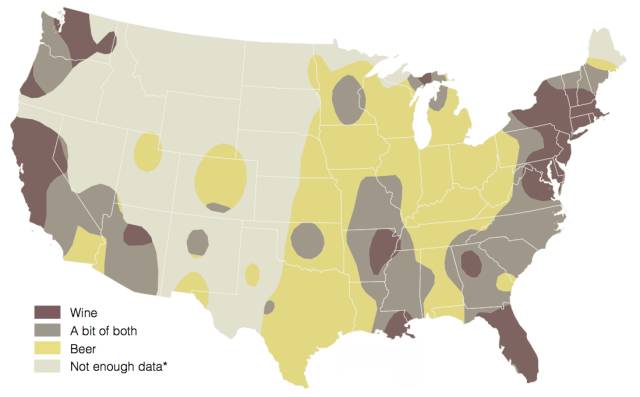Learning Righteousness and Supreme Leader’s Cultural Thought in Zhejiang ② Mountain Culture: An Important Demonstration of the Continuity of Chinese Civilization

General Secretary of the Supreme Leader emphasized that through the continuous efforts of several generations of scholars, the research results of major projects such as the Chinese civilization tracing project have proved China’s millions of years of human history, 10,000 years of cultural history and more than 5,000 years of civilization history. Chinese civilization has outstanding continuity, outstanding innovation, outstanding unity, outstanding inclusiveness and outstanding peace. Shangshan culture is an important demonstration of our 10,000-year cultural history, showing awe-inspiring innovation, and it is also an important starting point for the origin of continuous civilization in the Yangtze River basin.
Tens of thousands of years ago, modern people with common genes have spread all over the world. But around 10,000 years ago, only a few people domesticated wild crops with outstanding innovation, completed the agricultural revolution and started the process of civilization. China’s ancestors of uphill culture are among them.
The cradle of other primitive civilizations in the world is the Nile in ancient Egypt, the Euphrates and Tigris rivers in the Near East, and the Indus River in India, covering only a few hundred thousand square kilometers. The geographical cradle of Chinese civilization is vast and diverse. The cradle of China, which is only the core area of early civilization, covers an area of nearly 3 million square kilometers. A diverse environment naturally nurtures diverse people and cultures. Since the origin of agriculture, it has shown the characteristics of multiple competing innovations and development. The ancestors of the north cultivated the earliest millet and millet in the world; Ancestors in the Yangtze River valley and its adjacent areas domesticated the world’s earliest cultivated rice.
About 20,000 years ago, the ancestors of Immortal Cave in Wannian, Jiangxi Province burned the world’s earliest pottery and began to collect a large number of wild rice for food, which opened the prelude to the transition from Paleolithic to Neolithic in the Yangtze River basin and its adjacent areas. Around 10,000 years ago, the uphill culture in Jinqu Basin of Zhejiang Province really took the step of agricultural revolution.
The most solid evidence comes from carbonized rice particles. It may be that the rice accidentally fell on the side of the fire pit during cooking, and the rice was carbonized by barbecue. Although it was incomplete, it still retained the precious information of early rice farming. The small protuberance at the end of rice husk, called spikelet axis, is used to connect the trunk of rice husk and rice ear. The spikelet axis of wild rice is not developed. When the rice is ripe, the spikelet axis is difficult to bear the load and naturally breaks, and the rice falls to the ground, waiting for germination and growth again in the next year. The fragile spikelet axis is a delicate design of nature, which ensures the species reproduction of wild rice. When collecting wild rice, human beings will not pick up the fallen rice grains in the muddy water, but pinch the rice ears and eat the rice that is still preserved on the rice ears because the spikelet axis is relatively strong. Therefore, all rice seeds sown by human beings have strong spikelet axis genes. After long-term artificial intervention, the spikelet axis of rice will become stronger and stronger, and it will not fall off naturally, which is beneficial for human beings to collect and eat.
Abundant rice remains, including carbonized rice, rice husk, spikelet shaft and other different parts, have been unearthed at Qiaotou site in Yiwu, Zhejiang Province, with a total of more than 50,000 samples. The spikelet axis showed obvious domestication characteristics, indicating that rice farming had started around 10 thousand years ago, and the planted rice had become an important food source. In the analysis of soil samples in the lower cultural layer, rice phytolith with domestication characteristics was found, and the follow-up study may trace the agricultural origin of China back to an earlier period. At present, rice farming has fed 60% of the world’s population, which is a great contribution made by Chinese civilization to the survival and development of mankind.
The agricultural revolution is an epoch-making change from directly obtaining food from nature to transforming nature, domesticating animals and plants, and actively producing food. It not only greatly improves human survival ability, but also directly leads to profound changes in lifestyle, social organization and ideology. Relying on cultivated land makes settlement an inevitable way of living for agricultural people. During the hunting and gathering period, the natural mountains, rivers, lakes, wild animals and plants were all shared resources by the whole community. After the emergence of settled agricultural villages, cultivated land and grain produced are more likely to be converted into private property of pioneers and cultivators. Compared with hunting and gathering, the harvest of crops is more predictable. With more manpower and more sweat, you can get more harvest. Crops are also more conducive to long-term storage and provide survival guarantee when natural food resources are in short supply. These characteristics of agriculture are conducive to the accumulation of private wealth and are more likely to cause polarization between the rich and the poor. A more stable food source will inevitably bring about population growth, the expansion of community size, and ultimately promote the development of social organizations.
Qiaotou site is a typical representative of settled villages in the origin of rice farming. The village covers an area of 20,000 square meters, surrounded by carefully planned trenches, column holes of dry-column buildings that have been lived in the trenches for a long time, pits for storing food for a long time, pottery, stone tools, animal and plant remains left over from long-term life, and tombs for burying the dead, which reflect rich content of settlement life.
A stable and leisurely life will naturally lead to the development of culture and art. The pottery of Shangshan culture presents amazing elegance.
At that time, the process of making pottery was quite complicated. The brown clay tire of the pottery blank will be immersed in white mud and gently taken out, and the body has become white. Mud is made of clay containing silicon and aluminum, which is the raw material for making porcelain later, and is called "cosmetic soil". The white body will be immersed in the red mud again, dyed into warm red, and after firing, it will form a unique "mountain red". There are quite a variety of pottery, including large pots, flat chassis, pots, cans and foot-circling devices. There are many hollows on the circle foot of the circle foot device, not for practicality, but for beauty. The elegant neck and well-proportioned abdomen of the high-necked bottle are not inferior to the highest level porcelain in the Tang and Song Dynasties.
The ancestors who went up the mountain even scratched the red pottery with white colors, drawing various images and symbols. This is the earliest painted pottery in China, revealing profound spiritual information. There is a magic pattern on each side of the neck of a pottery jar. There are two kinds of patterns, and the patterns in symmetrical positions are the same. In the first pattern, there are three broken short lines, one continuous short line in the middle and two broken short lines on it. The following three breaks are exactly the same as the Kun hexagrams in the eight diagrams, and the two paragraphs above are exactly the same as the earthquake hexagrams, and the lower Kun is shocked, which is the "Yu" hexagrams in the sixty-four hexagrams. The second pattern consists of six short broken lines, and a long arc is sandwiched between the two broken lines. If you don’t consider this long arc with unknown meaning, it seems to contain six hexagrams. The broken line has the same meaning as the broken line, and the six hexagrams are all broken lines, which are the divinatory symbols of Kungua. Of course, it is difficult for us to say that 9000 years ago, the profound meaning and all the divinatory images of Zhouyi had been formed. But such similarity is hard to explain by coincidence. We can at least speculate that the Yijing-style way of thinking has sprouted in that distant era. Other typical decorations, such as grouped dots, "sun" patterns and triangular patterns on the top, are also not realistic or add "aesthetic feeling", but more like abstract stippling to convey mysterious meaning. Its true meaning is still difficult to decipher, but it is more intriguing than realistic images.
The social development mode based on rice farming laid by Shangshan culture has far-reaching influence. Archaeologists poetically describe the process of civilization in the lower reaches of the Yangtze River as "climbing a mountain, crossing a bridge, passing a ferry and coming to a beautiful continent surrounded by mountains and water". Around 8000 years ago, the cross-lake bridge culture rose in Ningshao Plain, and rice farming further developed. The formation of Hemudu culture around 7000 years ago marked the maturity of rice farming. Yuyao Shi ‘ao Site found the largest, oldest and most well-documented ancient rice field in the world, which was tens of thousands of square meters in Hemudu culture period and continued to be used until Liangzhu culture period more than 5,000 years ago. Different from millet agriculture, which basically depends on the weather, large-scale rice farming has high requirements for farmland water conservancy facilities, so it also promotes social development more effectively. The rise of Liangzhu culture is marked by the large-scale construction of water conservancy facilities. The water conservancy facilities around Liangzhu ancient city are huge and complex, which can effectively block the once-in-a-century flood, regulate the flow of more than 100 square kilometers of rivers, irrigate rice fields and form an efficient transportation network. Carbonized rice remains equivalent to nearly 200 thousand kilograms of rice were found in the core area of Liangzhu ancient city. It is precisely because of the highly developed rice farming that the ancestors of Liangzhu successfully built the earliest national political organization of Chinese civilization and became the most powerful demonstration of Chinese civilization for 5,000 years.
The General Secretary of the Supreme Leader proposed to "promote the creative transformation and innovative development of Chinese civilization, activate its vitality, carry forward the cultural spirit that spans time and space, transcends the country, is full of eternal charm and has contemporary value, and make the cultural relics collected in museums, the heritage displayed on the vast land and the words written in ancient books come alive, so that Chinese civilization, together with the colorful civilizations created by people all over the world, can provide correct spiritual guidance and strong spiritual motivation for mankind". As an important demonstration of the origin of rice farming in the world and the ten thousand-year cultural history of China, and an important starting point of the origin of Chinese civilization, the important value of Shangshan culture goes without saying, and its cultural remains are very promising in ontology protection, value interpretation, achievement display and utilization. With the further development of archaeological excavation and multidisciplinary research, the construction of related ruins parks and museums, and the implementation of more creative publicity and display strategies, it is believed that Shangshan culture will become an increasingly eye-catching cultural brand, providing a far-reaching cultural foundation for Zhejiang’s Chinese modernization.
[The author is the deputy director of the Institute of Ancient History, China Academy of Social Sciences]






















